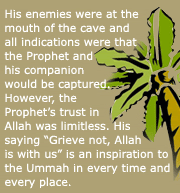Thousands of students buried in debris as colleges collapse
Thousands of students buried in debris as colleges collapse
HAMIDA BIBI wept as she tried to lift a concrete slab. She was searching for her ten-year-old son, one of 200 pupils trapped in the debris of Springfield junior school.
Four bodies retrieved from the rubble left by Saturday’s quake lay nearby. Shoes and books were scattered all around. About 80 per cent of Bagh, a town in Pakistani-controlled Kashmir with a population of 50,000, appeared to have been destroyed or severely damaged.
Bodies littered the streets. Officials estimated that the town had lost more than 4,000 people. “The death toll may reach 10,000 in the district and scores of villages are razed to the ground,” Sajjad Hussain, the local police chief, said.
What compounded the tragedy in Bagh was the number of children and teenagers who perished. At least six educational institutions were destroyed, causing about 2,000 deaths. Mohammed Yousuf, 60, a retired headmaster, sobbed beside the body of his 21-year-old nephew, retrieved from the wreckage of a college. Mohammed Saghir had been sitting an examination when the building collapsed, leaving more than 1,000 students buried inside.
Five bodies lay unclaimed on the campus. “There is no one to bury them,” said Saboor Ahmed, a student.
Volunteers were tackling a mound of twisted steel and concrete with iron rods and hammers. Some 500 students of a girls’ college were underneath. The town still had no outside help, and no machinery to remove debris. “Hundreds of lives could have been saved with help from the Government,” Hussain Gardazi, a construction manager, said.
Many people were angry with the Government. “The army troops did not move out of their garrison,” Javed Shah, an engineer, said.
But government buildings had been destroyed, and landslides had blocked roads. A senior official at the army’s local brigade headquarters said that 200 soldiers had been killed when their barracks collapsed. Many of the town’s 300 police officers had lost family members and returned to their homes and villages.
The main hospital had been destroyed, so Atiq Zahid, the superintendent, had set up an emergency medical camp. His clothes were bloodstained; he had been working non-stop for 24 hours. Dead bodies lay outside. “I cannot do much with no lifesaving drugs or proper surgical equipment,” Dr Zahid said. The other 18 doctors had gone to their villages to look after their families.
Thousands of families were spending a second night in the open because of aftershocks, amid heavy downpours. “Several children died because of cold,” a local police chief said.
The sight of army helicopters rescuing injured soldiers fuelled anger. “Why could they not send helicopters to take civilians?” Mr Shah said.
From Zahid Hussain in BaghTimes2005-10-10 14:21:50
HAMIDA BIBI wept as she tried to lift a concrete slab. She was searching for her ten-year-old son, one of 200 pupils trapped in the debris of Springfield junior school.
Four bodies retrieved from the rubble left by Saturday’s quake lay nearby. Shoes and books were scattered all around. About 80 per cent of Bagh, a town in Pakistani-controlled Kashmir with a population of 50,000, appeared to have been destroyed or severely damaged.
Bodies littered the streets. Officials estimated that the town had lost more than 4,000 people. “The death toll may reach 10,000 in the district and scores of villages are razed to the ground,” Sajjad Hussain, the local police chief, said.
What compounded the tragedy in Bagh was the number of children and teenagers who perished. At least six educational institutions were destroyed, causing about 2,000 deaths. Mohammed Yousuf, 60, a retired headmaster, sobbed beside the body of his 21-year-old nephew, retrieved from the wreckage of a college. Mohammed Saghir had been sitting an examination when the building collapsed, leaving more than 1,000 students buried inside.
Five bodies lay unclaimed on the campus. “There is no one to bury them,” said Saboor Ahmed, a student.
Volunteers were tackling a mound of twisted steel and concrete with iron rods and hammers. Some 500 students of a girls’ college were underneath. The town still had no outside help, and no machinery to remove debris. “Hundreds of lives could have been saved with help from the Government,” Hussain Gardazi, a construction manager, said.
Many people were angry with the Government. “The army troops did not move out of their garrison,” Javed Shah, an engineer, said.
But government buildings had been destroyed, and landslides had blocked roads. A senior official at the army’s local brigade headquarters said that 200 soldiers had been killed when their barracks collapsed. Many of the town’s 300 police officers had lost family members and returned to their homes and villages.
The main hospital had been destroyed, so Atiq Zahid, the superintendent, had set up an emergency medical camp. His clothes were bloodstained; he had been working non-stop for 24 hours. Dead bodies lay outside. “I cannot do much with no lifesaving drugs or proper surgical equipment,” Dr Zahid said. The other 18 doctors had gone to their villages to look after their families.
Thousands of families were spending a second night in the open because of aftershocks, amid heavy downpours. “Several children died because of cold,” a local police chief said.
The sight of army helicopters rescuing injured soldiers fuelled anger. “Why could they not send helicopters to take civilians?” Mr Shah said.
From Zahid Hussain in BaghTimes2005-10-10 14:21:50









0 Your Thoughts:
Post a Comment
<< Home